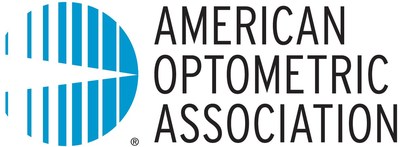More Than a Third of Americans At High Risk for Diabetes-Related Vision Loss
The American Optometric Association reminds patients that yearly, comprehensive eye exams are a critical pathway to early detection and prevention of diabetes-related eye disease
ST. LOUIS, Nov. 8, 2018 /PRNewswire/ -- More than 30 million Americans with diabetes and another 84 million who have prediabetes are at risk for developing diabetic eye disease, the leading cause of blindness among adults. As prevalent as the condition is, 79 percent of Americans don't know diabetic eye diseases have no visible symptoms and more than half do not know comprehensive eye examinations can detect diabetes, according to a recent Eye-Q® Survey conducted by the American Optometric Association (AOA).

"In-person, comprehensive eye exams by doctors of optometry are critical not only for early diagnosis and timely, sight-preserving treatment but also to refer and connect patients into the larger, multidisciplinary diabetes care network," says AOA's President, Samuel D. Pierce. "In fact, last year alone, doctors of optometry found more than 401,000 cases of diabetes-related manifestations in patients who were not aware they had diabetes, leading to a prompt diagnosis and care which minimizes the risk of complications."
Diabetes is a chronic and serious disease that can cause a wide range of problems, including heart disease, kidney failure, amputations, blindness and even death. Despite its severity, diabetes is manageable and, in some cases, avoidable through deliberate and concerted intervention—especially as it relates to eye health and vision care. Still, anywhere from a third to half of people with diabetes don't take the necessary steps to protect their vision through routine eye examinations. This is of great concern to doctors of optometry considering 20 to 40 percent of individuals with type 2 diabetes already have diabetic retinopathy, a significant vision-threating complication, at the time of their initial diabetes diagnosis, according to AOA's evidence-based clinical practice guideline, Eye Care of the Patient with Diabetes Mellitus.
During American Diabetes Awareness Month in November, the AOA is committed to educating patients about ways to prevent and minimize eye complications caused by diabetes. As the leading authority in eye and vision care, the AOA advocates for regular, dilated eye exams for those with diabetes, or at risk for diabetes, because the alternatives, like online vision apps, only check for refractive errors like nearsightedness, farsightedness or astigmatism and cannot detect diabetes.
"When the eyes are dilated, a doctor of optometry is able to examine the retina for signs of diabetic eye disease and prescribe a course of treatment to help preserve an individual's sight," Dr. Pierce states. "Many eye problems show no symptoms until they are in an advanced stage, but early detection and treatment can truly save a person's vision. No online app can do that."
Doctors of optometry nationwide are working with other health care providers to ensure patients receive the highest quality care, maintain good vision and live healthy lives. The AOA encourages all patients, especially those with diabetes, to watch for signs of potential problems and contact a doctor of optometry if they experience any of the following:
- Sudden blurred or double vision;
- Trouble reading or focusing on near-work;
- Eye pain or pressure;
- A noticeable narrowing of vision; and
- Visible dark spots in vision or flashing lights in one or both eyes.
In addition to having a yearly, comprehensive eye exam, the AOA offers the following tips to help prevent or slow the development of diabetic eye disease:
- Maintain a healthy diet including Omega 3s, fresh fruits and vegetables;
- Take prescribed medication as directed;
- Keep glycohemoglobin test results ("A1c" or average blood sugar level) consistently under seven percent;
- Exercise regularly;
- Control high blood pressure; and
- Avoid alcohol and smoking.
Visit www.aoa.org for more information on diabetes and comprehensive eye examinations. For additional resources, visit http://www.allaboutvision.com/conditions/diabetic.htm.
About the American Optometric Association (AOA):
The American Optometric Association, a federation of state, student and armed forces optometric associations, was founded in 1898. Today, the AOA is proud to represent the profession of optometry, America's family eye doctors, who take a leading role in an individual's overall eye and vision care, health and well-being. Doctors of optometry (ODs) are the independent primary health care professionals for the eye and have extensive, ongoing training to examine, diagnose, treat and manage disorders, diseases and injuries that affect the eye and visual system, providing two-thirds of primary eye care in the U.S. For information on a variety of eye health and vision topics, and to find an optometrist near you, visit www.aoa.org.
![]() View original content to download multimedia:http://www.prnewswire.com/news-releases/more-than-a-third-of-americans-at-high-risk-for-diabetes-related-vision-loss-300746834.html
View original content to download multimedia:http://www.prnewswire.com/news-releases/more-than-a-third-of-americans-at-high-risk-for-diabetes-related-vision-loss-300746834.html
SOURCE American Optometric Association
